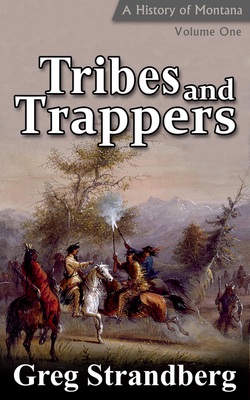 Kerr Dam (photo by Tom Bauer)
Kerr Dam (photo by Tom Bauer) The deal cost $870 million and that means I’ve got to pay $4.50 more on my bill each month on average.
Is there any way to get my power bill lower now? I’d like to think so, because this month my power bill was $62.67…and I’ve just got a 2-bedroom apartment (and a crappy dryer). In the winter, however, that bill shoots up a lot – we had $182.84 last February, but you’ll have to ask my wife why.
So how does that break down, why does it cost so much? As far as I can tell I get delivery charges and supply charges on my bill. What I’m really interested in are the supply numbers, which cost me $0.005 for residential deferred supply and $0.062 for residential supply.
If I want to get mathematical I can take that $62.67 and divide it by that 556 I have to get an average power cost of $0.11 per kWh.
Golly, 11 cents doesn’t sound like a whole helluva lot, now does it? I bet if I walked downtown I could find that on the ground in a few minutes, or just ask for it from strangers and get it in seconds. The point is, though, that money adds up big time.
Montana has an estimated 2013 population of 1,015,165…according to Wikipedia. Let’s say that just half of those people are paying a power bill, and let’s say it’s just 50 kWh a month, alright?
That brings total revenue for Northwestern Energy in Montana to $2,791,703.75 for that month, based on a $5.5 power bill for each of those 507,582.5 people.
Not bad for a month’s work, huh, and especially when much of that power that Northwestern Energy is getting is coming to them for free, or pretty close to it.
See, they’re using hydropower – dams. This is free money here – it comes from water that’s already in the mountains and because of another free energy source – gravity – it flows down. It’s that moving that’s the really important part.
I think the big deal is the same thing my son has – 3-year-old-itis. I can’t help but think that environmental groups just want to act like Dr. Seuess’s The Zax!
Located between Marias Pass and Rogers Pass, the Rocky Mountain Front is as clear of a delineation you can get between the Great Plains and the Rocky Mountains. Trappers coming 200 years ago would have stopped and stared at what lay before them, settlers fifty years after that would have turned south to go around.
One of the main pushers for that to happen was the Coalition to Protect the Rocky Mountain Front, and you can read all about this in Dave Skinner’s piece in Range Magazine this Fall Issue.
Take wind. I’d love to see more windmills up and around the state, much like I saw over the fields of Germany when I was taking the train through there in 2009. Unfortunately, a stray windmill might disrupt some bird’s flight path or create an eyesore for…groundhogs. (Who the hell lives in the middle of nowhere)?
That gets you nowhere, and as you can see from the Zax video, the world just moves on. That’s why I scratch my head and wonder what the hell environmentalists are doing.
Here we have the Gibson Dam – a huge thing built nearly 100 years ago, that already has the capability to produce power if we’d just put some money into it or get some companies to or whatever.
Montana has always been a hydro state, even before coal started. The first coal mining didn’t really get going until 1924 when the Northern Pacific started it up large-scale in Colstrip.
Long before that people were building dams, as I wrote about on my Montana blog and in my fourth volume of Montana history. One of those main dams was the 199-foot high and 960-foot long Gibson Dam, with a spillway that could accommodate 30,000 cubic feet of water flowing through it per second.
Subsequent studies have suggested the dam could produce 15 MW if a powerhouse making use of the original penstocks were built near the dam.
The Battle over Gibson Dam’s Power Potential
“We are looking at supplying energy to the market,” Thom Fischer, an engineer for Whitewater Engineering said to the Helena Independent Record that year, “and we think we can help Greenfields by lowering their costs.”
Try telling that to David Letterman, a recent Montanan transplant from back East. First, I like David Letterman, I think he’s a great guy. Next, he’s wildly out of touch with how most of us live. Case in point, he has a ranch management company, one that has an attorney.
When that finally subsided in 2008, the Great Falls Development Authority submitted plans to the Federal Energy and Regulatory Commission (FERC) to start making power at Gibson Dam. The plan would cost $25 million and get that 15 MW potential up and running.
Toll House Energy Co. of Bellingham, Washington, was an early supporter and FERC issued a permit to them. What’s more, the Greenfields Irrigation District signed-on, which is really just a rural cooperative of farmers getting a great deal on that irrigation resource.
Still, these transmission lines have been in the news in Montana before, when the Missoula Independent reported on Montana transmission lines in 2011, as did High Country News.
Tollhouse Energy had wanted to begin constructing those lines as early as 2009, but it just couldn’t be done.
What really gets me is these rich guys from out of state that come to Montana and then get their high-priced lawyers to push us around. Most of the time it’s so they can rape the land of its resources. In this case, however, it’s so they can stop a dam from fulfilling a function it was designed for when they weren’t even a twinkle in their father’s eye.
The nerve of these folks, let me tell you! I mean, I guess I can understand it – Letterman has to look at those tall skyscrapers most days in New York. Montana is his special place, and when he comes here he wants things his way. Hey, that might mean slightly higher power bills for you, but isn’t Dave’s view worth that to you? Shouldn’t his time on the Network be rewarded? I mean, gosh – Jay Leno stole his job once! If you don’t care about that you must be un-American.
I could go on with this train of thought all day, but I’d probably get a cease and desist order from Massey, Dave Letterman’s lawyer. I don’t need that shit.
Conclusion
Of course we both know it’ll be a whole lot more than that. The final environmental assessment was issued for the project in 2012.
It put the final transmission line at 26-miles long to head to the existing line at Jackson’s Corner. What’s more, a substation would be built 10 miles east of the powerhouse along the line.
So what would this look like if it actually started moving again?
- First, the permits are there – FERC approved them years ago.
- Next, there’s already local support from farmers that use that existing water.
- Then, out of state companies are already set with funding and construction plans.
- Finally, the PSC is likely to approve this because it will ensure Northwestern Energy can pay off that massive dam purchase they just made, perhaps sooner than expected, saving Montana ratepayers money.
That’s the Montana PSC’s main job – to save Montana taxpayers money, and this seems like a good idea.
But wait a minute, who’s this Toll House Energy that’s pushing this deal? I mean, they’re in Washington, right?
Yeah, I wonder about that, but it seems most of our power stuff is out of state these days. What is clear is that the State of Washington gets most of its power from clean hydro like the Gibson Dam can produce, and they have a lot of demand over there. Already our energy prices are quite low, and if we can sell some of that it’s good for you as a consumer and it’s good for Northwestern Energy.
I think we need to accept that Northwestern Energy is a big player in Montana and will be for some time. I’d like to think of them as a friend, something that’s pretty easy to do considering that Northwestern Energy employs 1,113 workers in Montana. If they can get rid of their debts sooner, it’ll make my power bill in winter a little more manageable.
It was a pretty good one back in 1906 when they originally drew up the plans for Gibson Dam, it was pretty good in the ‘80s when firms were thinking about it, and it was pretty good in the 2000s when these most recent firms picked it up again.
Can someone please tell that to David Letterman when he’s in town again from New York?

















